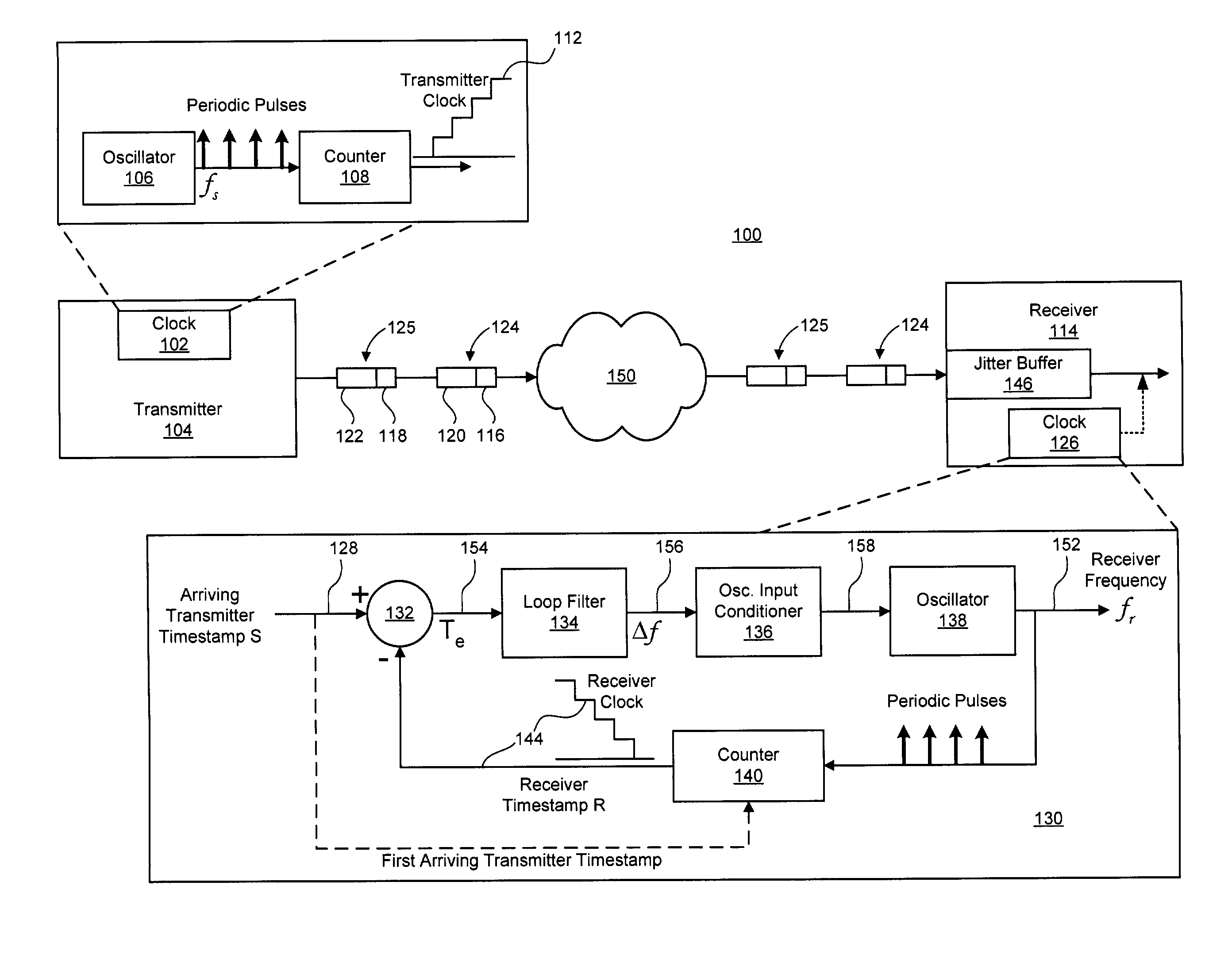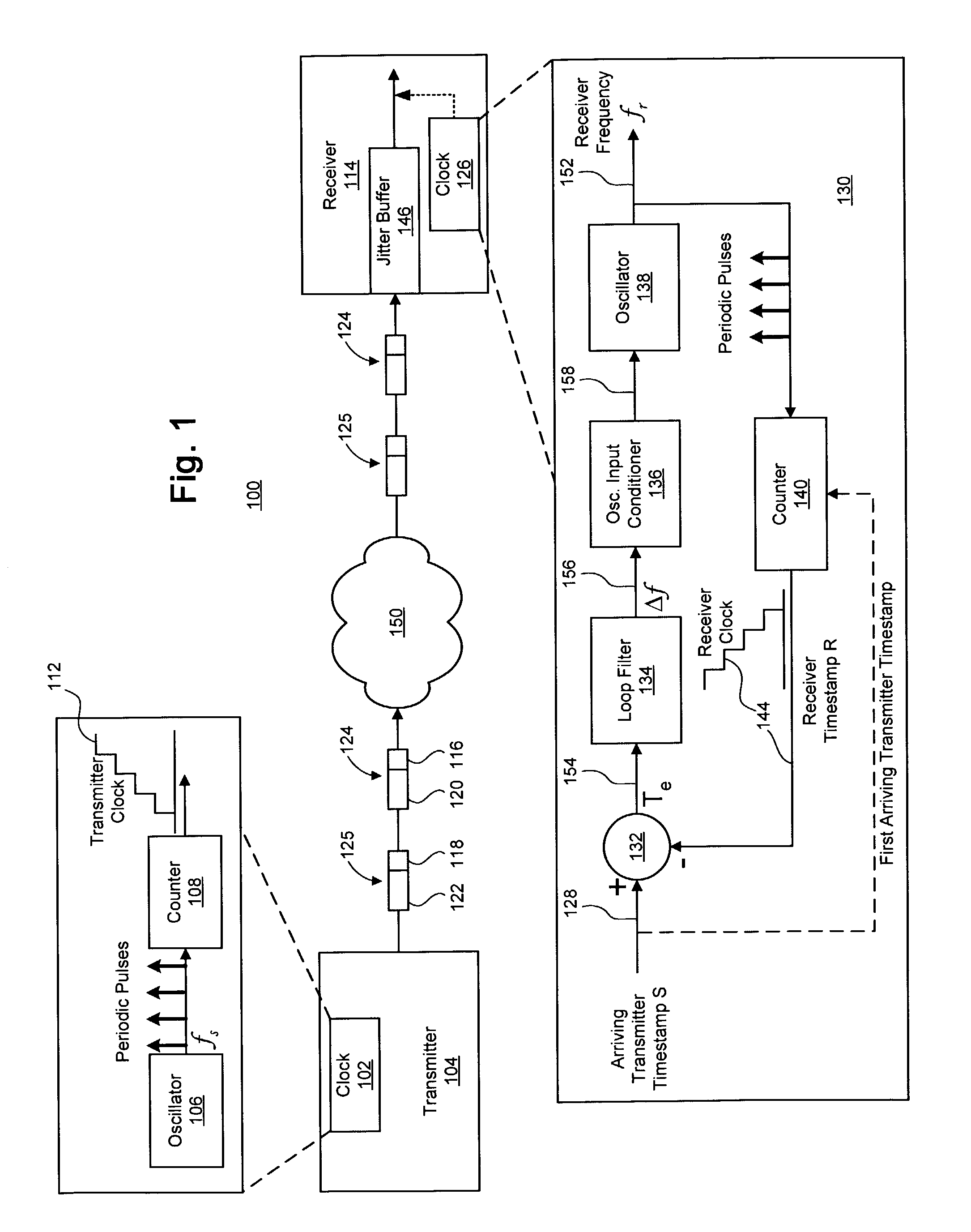Clock recovery using a double-exponential smoothing process
a smoothing process and clock recovery technology, applied in the field of clock synchronization, can solve the problems of large data loss, periodic line errors, etc., and achieve the effect of accurately estimating the model coefficients and reducing the number of time series values
- Summary
- Abstract
- Description
- Claims
- Application Information
AI Technical Summary
Benefits of technology
Problems solved by technology
Method used
Image
Examples
Embodiment Construction
)
[0018]FIGS. 1–5 illustrate exemplary techniques and systems for synchronizing a receiver clock with a transmitter clock using a linear model of the error between the transmitter clock and the receiver clock to estimate a frequency offset by which to adjust the frequency of an oscillator of the receiver clock. In at least one embodiment, the estimated frequency offset is determined based in part on a double-exponential smoothing process of the errors between the transmitter clock and the receiver clock. Also described herein is a phased-lock loop (PLL) adapted to synchronize a local clock with a reference clock using the double-exponential smoothing process, as well as a system implementing such a PLL for timing the playout of data received from a transmitter.
[0019]Clock synchronization techniques in accordance with at least one embodiment of the present invention can be used to synchronize the clocks of individual nodes in a network to a common reference, as a clock synchronization...
PUM
 Login to View More
Login to View More Abstract
Description
Claims
Application Information
 Login to View More
Login to View More - R&D
- Intellectual Property
- Life Sciences
- Materials
- Tech Scout
- Unparalleled Data Quality
- Higher Quality Content
- 60% Fewer Hallucinations
Browse by: Latest US Patents, China's latest patents, Technical Efficacy Thesaurus, Application Domain, Technology Topic, Popular Technical Reports.
© 2025 PatSnap. All rights reserved.Legal|Privacy policy|Modern Slavery Act Transparency Statement|Sitemap|About US| Contact US: help@patsnap.com



